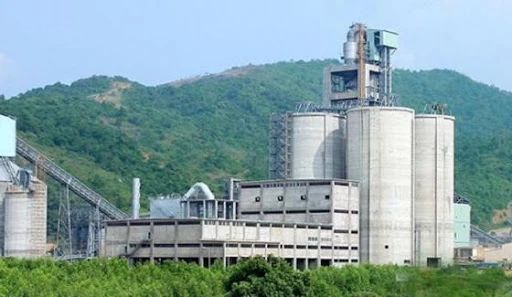
JOURNALIST: - Sir, towards the end of 2019, the cement industry continued to set an export record of nearly 34 million tons, which was the highest level ever. What do you think will be the pressures on cement exports in 2020?
Mr. NGUYEN QUANG CUNG: - 2018 was the first year that cement and clinker exports reached USD 1,246 bn, with a production of 32 million tons. 2019 continued to be a successful year for exports of cement and clinker, with a total production of approximately 34 million tons, reaching USD 1,394 bn. Not only was the second year in the top billion-dollar export club, but also the second consecutive year that the cement industry had a record export. Contrary to the original forecast, due to the impact of the trade war in 2019, the world economy slowed down and real estate fell into difficulties, but cement exports reached 2.5 million tons.
In 2019, Vietnam was still stable compared to other world cement markets. It is estimated that total cement and clinker production in 2019 reached 98-99 million tons, up 2% compared to 2018. This year, the Ministry of Construction forecasts cement demand will continue to increase at 4-5% compared to 2019, and will be about 101-103 million tons, in which domestic cement consumption will be about 69-70 million tons, and export about 32-34 million tons.
However, I think the growth will be lower. The reason is that the real estate market does not have many new projects, and infrastructure projects are no better. These are the two main consumption sources for construction material. In addition, the price of cement has increased due to increase in raw material prices, and if the price increases too high, it will not be able to compete with imported products. Therefore, the story of the cement industry is still quite bleak as there is also a great amount of pressure on exports this year.
- Not only real estate, but will the slowdown in urban transport infrastructure also affect the growth of the cement industry this year?
- Not only will construction and real estate have a direct impact on the cement industry, but basic construction works for transport also will need cement. In fact, the past years show that, if big traffic projects such as roads and bridges are constructed more, the cement industry grows well.
In the last two to three years, many projects are leveling off, new projects have no scale, partly due to the impact of the government tight spending policy, so the domestic market for the cement industry is not the answer. Currently, the domestic market for the cement industry is only a segment of civil construction but that is not significant. So, in 2019 cement exports increased sharply.
It can be said that in 2019, the cement industry promptly changed to cope with difficulties when the real estate market leveled off. But in my opinion, in 2020, difficulties for the cement industry will be greater. Especially at the present time, after the restructuring period, the production of cement for export to China and Thailand has increased, which will make Vietnam's cement exports more competitive. Therefore, domestic cement manufacturing and export enterprises need to grasp the latest developments in the world cement market in order to timely adjust production activities, increase or decrease supply to avoid a price squeeze, and have a long-term strategy for their production and business marketing activities.
- There is a view that despite two consecutive years of success in exports, our cement market is still fragmented, more investment is needed in production and labor, while efficiency is very low. What is your opinion on this issue?
- Vietnamese cement has made a name in the world market now with a presence in 40 countries and territories. In particular, in 2019, exports reached 34 million tons, making Vietnam the largest exporter of cement in the world. However, in the long term, the industry requires restructuring and production efficiency if we have to stay in the world market. If we look, we will see that foreign enterprises have already entered the Vietnamese cement market in the last five years, mainly from ASEAN countries, though not multinational corporations.
Currently, Vietnam has cement production capacity of about 120 million tons with more than 60 production factories, while Thailand has production capacity of nearly 60 million tons with five manufacturers. Vietnam has two third of the cement production lines with a capacity of one million tons per year, accounting for about 20% of the industry's total output. Meanwhile, the minimum scale to ensure competitiveness of a cement factory must be two million tons per year and to ensure long-term efficiency, the scale of a cement enterprise must produce at least 5-10 million tons per year, by reducing costs, increasing labor productivity, and investing in new technologies.
This fact has been proved by large-scale cement manufacturers such as Vissai, Xuan Thanh, and Vicem, who have always more advantage in business and export negotiations because they produce in bulk. Therefore, the overall restructuring of the cement industry is something to be seriously considered.
- Thank you very much.




















